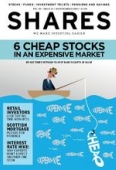Archived article
Please note that tax, investment, pension and ISA rules can change and the information and any views contained in this article may now be inaccurate.
Retail investors miss out on large gains from IPO offers

Retail investors are missing out on significant gains enjoyed by institutional investors who are able to take part in IPOs (initial public offerings), according to analysis by Shares and AJ Bell.
We’ve calculated the share price performance of every IPO this year and compared the gains between buying at the IPO offer price and buying at the first available price in the market on day one.
The difference is astonishing. Institutional investors, such as actively-managed funds and pension funds, would have made an average 11.8% gain if they’d bought all of the 77 companies floating on the London Stock Exchange this year. The data assumes they paid the IPO offer price.
In contrast, retail investors would have only made 2% average gain if they’d bought at the first possible chance, being the market open on the first day of dealings.
Why are retail investors treated differently?
The majority of IPOs offers are not open to the general public. The people running stock market flotations such as brokers and banks find it easier to call round a small group of people who can potentially put up large amounts of cash to support an IPO.
Involving thousands of retail investors is much more of an effort given lots of paperwork and promotional work; hence why the general public tends to have to wait until a stock is trading before they can buy.
So why have retail investors only be able to enjoy a fraction of the returns generated for institutional investors in this analysis? The answer is simple. Many stocks have started trading at a much higher price than their IPO offer.
Strong demand for stock pushes up the price ahead of the market open, so the first trades are settled at large premiums to the price made by the institutional investors in the offer period.
Discounted starting price
One view among City experts is that IPOs are generally priced at a 10% to 20% discount to their theoretical value. So a company worth 100p per share would normally float at 80p or 90p.
Pricing the shares in such a way makes them attractive to institutional investors and in theory suggests the shares are more likely to rise once they float, as the value adjusts to more normal levels.
We calculate that retail investors on average have this year paid 9.8% premium to buy IPOs compared to institutional investors buying at the IPO offer price.
Which stocks traded at the biggest premium?
This year’s biggest difference between the market opening price on the first day of dealings and the IPO offer price was SkinBioTherapeutics (SBTX:AIM) with a 47.2% premium. The Manchester University spin-out priced its IPO at 9p, started trading at 13.25p and peaked at 16.25p in April.
Retail investors had to pay a 34.5% premium to institutional investors who took part in the IPO of kettle controls specialist Strix (KETL:AIM).
The lure of a 7% dividend yield (based on the IPO price) and cheap valuation made Strix seem a no-brainer for many investors, hence why so many people were happy to pay up when the shares started trading. However, we’d say Strix was an exception to normal IPOs.
The business was the last holding in a private equity fund trying to wind itself up, so the owner was effectively happy to get rid of Strix at a discounted price, according to Chris White, a fund manager at Premier Asset Management.
Alfa Financial Software (ALFA) started trading on the stock market 29.2% above its IPO price at 420p and now trades at 489.9p.
Retail investors should always think about what a company is worth before buying the shares.
Never race to buy IPOs simply for fear of missing out on the post-listing rally. Inevitably most new stock market listings go up, then back down slightly (as early birds take profit) before heading back up. That gives you plenty of time to research a stock and decide at what price you’d be happy to buy, if at all. (DC)
Important information:
These articles are provided by Shares magazine which is published by AJ Bell Media, a part of AJ Bell. Shares is not written by AJ Bell.
Shares is provided for your general information and use and is not a personal recommendation to invest. It is not intended to be relied upon by you in making or not making any investment decisions. The investments referred to in these articles will not be suitable for all investors. If in doubt please seek appropriate independent financial advice.
Investors acting on the information in these articles do so at their own risk and AJ Bell Media and its staff do not accept liability for losses suffered by investors as a result of their investment decisions.
Issue contents
Big News
- Loss of confidence in UK IPO market
- Sweet and sour from ABF
- UK challenger bank in £1.1bn takeover
- Is GVC clearing the decks for Ladbrokes bid?
- Scottish Mortgage pleads for patience
- The fall-out from first rate rise in a decade
- Merry Christmas for Morrisons
- Why Indivior’s opioid addiction treatment is likely to be approved this month

 magazine
magazine











